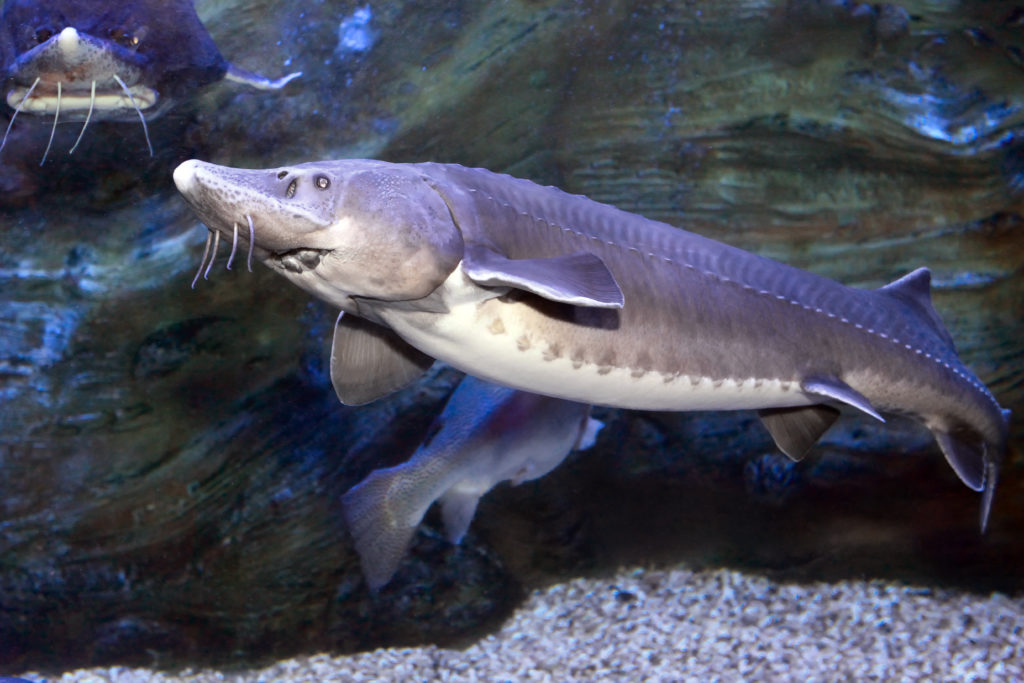Tsar quality

As one of the most expensive dishes on the planet – just 1kg of an Iranian-bred variety sold for £20,000 a few years ago – it is no surprise that caviar doesn’t regularly feature on most people’s shopping list.
Even in a pandemic year, however, caviar remains a hugely valuable business with China now firmly in the driving seat for both consumption and production, according to a report from EUMOFA, the European Marketing Observatory for Fisheries and Aquaculture.The global market this year is likely to be worth US $1.55bn (£1.09bn), up by 75% on five years ago, with Chinese fish farmers exporting 150 tons a year.
Caviar, sometimes dubbed “black gold”, is roe from the sturgeon, which is mostly farmed today because over-fishing has led to the near extinction of several of the species in the wild. Caviar ranks alongside other luxury delicacies such as foie gras and black truffles.
Historically, sturgeon were harvested in the Caspian Sea and their roe sold as caviar by Russia, where it was once almost regarded as a national dish, and Iran.
Today, the increasingly wealthy Chinese have taken over production, and are now also the world’s largest consumers.
Caviar also remains popular with Western consumers, however, particularly in the United States and Europe.
The EUMOFA report, updated from an earlier study three years ago, says the rapid growth in Chinese caviar production has increased international competition over the last decade and a sharp decrease in average prices.
For example, the average import price in the EU bloc has decreased by almost 40% from €430 per kg (£370) in 2014 to €264 (£227) in 2018, the most recent year for which figures are available.
The report continues: “However, it seems that the price level has since stabilised, although at historically low levels. EU producers and exporters are also faced with Chinese competition in other markets.
“From a yearly average export price of €538 per kg (£462) in 2014, the caviar price decreased by 22% to €422 per kg (£363) in 2018.”
Prices remained stable in 2019 and, surprisingly perhaps, increased by 10% in 2020.
The report goes on: “Recently, the Chinese government has published a new regulation to combat water pollution. This directly affects the aquaculture production of Chinese caviar and may cause several farms to close. “
EUMOFA reports that the Chinese exporting company Kaluga Queen managed to secure a delay until 2024 before having to meet the new standards.
“As China increases its focus on sustainability and increasing domestic consumption, there is hope that price pressure and competition for other producers may soften,” the study adds.
It also predicts that, as pandemic restrictions ease, demand from traditional outlets for caviar such as high-end restaurants and luxury cruise ships should see an increase.
According to CITES (the Convention on International Trade In Endangered Species), Europeans consumed around 126 kg of the delicacy in 2018 with France and Germany being the largest at 57.9 and 25.7 kg respectively. EU states are also important producers, led by Italy at 54 tons and France at 45 tons.
Precise consumption figures for the UK are not available, but Britons imported around four tons of caviar in the pandemic year of 2020.
While China remains the largest player, EUMOFA says other countries are getting in on the act. Russia too is partly back in business, harvesting between 40 and 50 tonnes of sturgeon caviar last year. In 2019, there were 80 farms in Russia producing sturgeon and caviar, mainly for home consumption. However, it has been alleged that the Russian production numbers include falsely labelled caviar from China and Uruguay.
Outside China, Americans are among the largest consumers of caviar and the USA is also a small but growing producer. Many might be surprised to learn that in the 19th century the United States produced 90% of the world’s caviar, sending 15 trainloads a day to New York and all the major European capitals. It was such a common dish at one point it was served free in saloons to encourage thirsty drinkers.
Today, Americans – those who can afford it – still love their caviar and it remains one of the major markets as well as being an exporter, mainly to Japan, Canada and the EU.
In turn the US market is supplied by several nations, with Germany and France being the main providers. These two countries are also the largest consumers in the EU and buy mainly from China. But France also imported a small amount from Madagascar, an indication of how many countries are now producing caviar.
The EUMOFA report says the pandemic has had a strong impact on the caviar market. As the hotel catering and restaurant (HORECA) segment was largely shut down along with a dramatic reduction in airline and cruise ship travel, the traditional market outlets for caviar virtually disappeared.
Whether some of the recent changes become permanent remains to be seen, but EUMOFA believes some new trends could stay around.
“The possibility of purchases directly from the producers assures consumers of the origin and quality of the caviar. As pandemic restrictions ease, demand from traditional outlets for caviar such as high-end restaurants and luxury travel is likely to pick up again,” the report states.
. 

